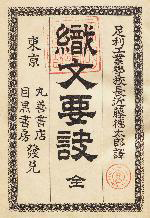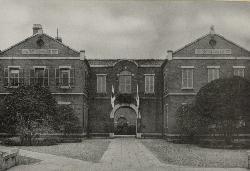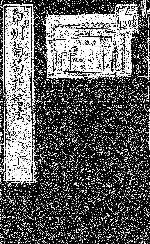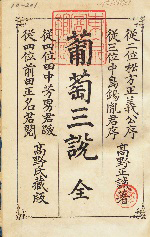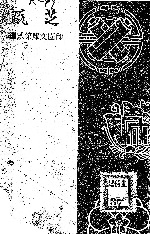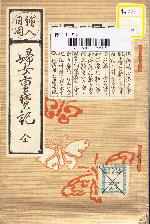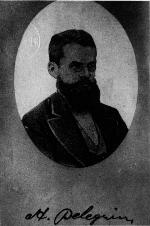![]()
Chapter 2: Industry
Section 2: The influence of France in various industries
In addition to the transfer of technology via the large scale government operated factories discussed in Section 1, French influence can also be seen in various other fields of industry. After the Meiji Restoration, in leading indigenous industries, such as the weaving industry of Nishijin, there were movements to send students to study abroad in the various countries of the West in order to introduce new Western technologies. In addition, there were also examples of the industrialization of the technologies and lifestyles encountered at government operated factories and foreign settlements. This section will provide introductions of the Kyoto Nishijin, which dispatched exchange students to Lyon, France's major textile production region, Yamanashi Prefecture, which attempted winemaking using Koshu grapes with imported French technologies and techniques, ITO Sakae (1847-1911) who industrialized cosmetics production through new technologies and techniques gained from the Yokosuka Shipyards, Yokohama gas lamps, which began in the settlements and were industrialized with the assistance of French engineers, and other related topics.
Textiles
KONDŌ Tokutarō (Tr.), Shokumon yōketsu, Maruzen[et al.], 1898 [79-219] 
In 1872, Kyoto Prefecture dispatched 3 weavers, including SAKURA Tsuneshichi (1835-1899) to Lyon, and had them bring back new machinery including jacquards and battant. In 1877, 8 exchange students, including KONDO Tokutaro (1856-1920), were dispatched to France to study textiles, dyeing and other subjects, headed by Léon Dury (1822-1891), a Frenchman who had worked as an instructor at the French College of Kyoto, etc.
After graduating the French College of Kyoto, KONDO studied textiles at the Tokyo Products Research Institute of Industries Encouragement Bureau. During this time he also served as an interpreter for the French Émile Guimet (1836-1918), for whom the Guimet Museum was named, and painter Félix Régamey (1844-1907) during their visit to Japan. KONDO was added to the Kyoto Prefecture exchange students at the recommendation of Dury, and was charged with learning the skills of operating textile machinery. After returning to Japan in 1882, he was involved in the establishment of the Kyoto Weaving Company, etc., however he was invited to the Tochigi Prefectural Engineering School and lead the weaving industry of Ashikaga. This book is an abridged translation by KONDO of a classical textbook on textile technologies and techniques by P. Falcot (1804-?).
Kyōto orimono kabushiki gaisha (Ed.), Kyōto orimono kabushiki gaisha 50 nenshi, Kyōto orimono, 1937 [740-34] 
After the Meiji Restoration, with the Tokyo relocation of the capital, Kyoto faced significant decline. Even its major industry, the weaving industry of Nishijin, fell into stagnation as a result of changes such as the dress code of the court being revised to western clothing. Kyoto Prefecture worked to actively import western production technologies and techniques, and established a weaving plant called "Oridono", which was equipped with the jacquards brought back by SAKURA and the others on a massive scale. However, the operation of Oridono did not make a profit and it faced many difficulties. KONDO Tokutaro, INABATA Katsutaro (1862-1949) and others who were dispatched by the prefecture to France, returned to Japan, and worked to try and meet the demand for decorations for the construction of the imperial palace which was occurring at the time, however KITAGAKI Kunimichi (1836-1916), the prefectural governor, undertook a policy of transferring Oridono to the private sector, and the Kyoto Weaving Company was established in 1887 through the collaboration of Tokyo capital including SHIBUSAWA Eiichi, OKURA Kihachiro (1837-1928) and local capital. The prior-existing weaving industry of Nishijin was at the stage of a cottage industry or manufacturer, however, the company possessed steam engines introduced to Oridono in 1886, and began carrying out large scale mechanical factory production. This book is a company history published to celebrate the 50th anniversary of the founding of the company.
Winemaking
FUKUBA Hayato, Kōshū budō saibaihō, Yūrindō, 1881 [7-139] 
After the Meiji Restoration, from the viewpoint of providing an alternative to the brewer's rice, which suffered from a rice shortage at the time, and of providing employment to the Samurai who had returned to farming, winemaking began as a national enterprise. FUKUBA Hayato (1856-1921), was born as the child of a retainer of the Tsuwano Domain and studied at the Products Research Institute of Agriculture Encouragement Bureau of the Ministry of Home Affairs, etc. This book is a survey report of grape cultivation methods in 1878, when he was ordered to travel to Yamanashi prefecture.
Koshu grapes had long been produced in the prefecture, and their cultivation grew to full stride during the Edo Period. Differing from the wild grapevines indigenous to Japan, these were European breeds suited to winemaking. In 1880, at the suggestion of FUKUBA, the government operated Banshu Vineyard was established in Hyogo Prefecture, and attempted production of French style wine. FUKUBA worked operating the vineyard as its Acting Director (and later director) from 1883, however the operation had difficulties due to parasites and weather disasters. In 1886, he was sent to study abroad in France and Germany to research grape cultivation and brewing methods, worked in the Ministry of Imperial Household after returning to Japan, and worked on the improvement of the Shinjuku Gyoen Imperial Garden, becoming a pioneer in Japanese horticulture.
TAKANO Shōsei, Budō sansetsu, TAKANO Shōsei, 1890 [37-178] 
In 1877, MAEDA Masana (1850-1921) returned from France after studying there as an exchange student since the first year of the Meiji Era, proposed the establishment of a government operated nursery company and the Mita Breeding Station was established. The breeding station collected both domestic and foreign grape breeds and researched the industrialization of winemaking. In Yamanashi Prefecture at the time, prefectural governor FUJIMURA Shiro (1845-1909) was already attempting the production of wine using the local specialty Koshu grapes, and winemaking was promoted as one part of the Increase Production and Promote Industry policy. The brewing company established mainly around wealthy farmers, in Iwai Village (present day Katsunuma) in the prefecture, sent the 2 youths TAKANO Masanari (1852-1923), TSUCHIYA Ryuken (1858-1940) to France as trainees in the care of MAEDA who was travelling to France again as an official of the Paris International Exposition in the same year. While the 2 had not mastered French, they acquired cultivation skills by actually working for a year at a plantation, and extended their period of study abroad by a half year at their own expense to further study brewing processes, returning to Japan with knowledge of winemaking methods after a difficult time abroad. This book is a production manual by TAKANO.
Cosmetics
YAMAGISHI Sōjirō (Ed.), Shikan, Marumiya, 1909 [特53-183] 
ITO Sakae (the first, 1847-1911) was the 4th son of ranpoi (a person who studied Western medicine by means of the Dutch language) ITO Genboku (1800-1871) who studied under Heinrich Philipp von Siebold (1796-1866) and worked to ensure the propagation of immunization. He studied abroad in France through the Yokosuka Shipyards, and became a weapons dealer. In 1904, when HASEBE Nobuhiko (1850-1924), who had also studied abroad in France and studied chemistry, succeeded in manufacturing lead-free powder, ITO cooperated in the commercialization of the product and established Ito Kochoen.
In Japan, traditionally face powder which used lead as a raw material was used, so there were a large number of people among women and kabuki actors who suffered from lead poisoning. In 1887 in particular, in a Kabuki played in the presence of the Emperor held at the residence of Minister of Foreign Affairs INOUE Kaoru, NAKAMURA Fukusuke (Fukusuke IV of the Narikoma-ya school, later NAKAMURA Shikan V and NAKAMURA Utaemon V, 1866-1940), was unable to stop his body from shaking due to lead poisoning, and the poisonous nature of the lead became more widely known. Ito Kochoen's Misono Oshiroi was supported by kabuki actors and became a big hit. This book is written by 5th generation NAKAMURA Shikan to promote the sales of Misono Oshiroi.
NOMURA Hisatarō (Ed.), Fujo chōhōki, Itōkochōen, 1912 [特111-92] 
This is thought to be a pamphlet issued by Ito Kochoen to promote sales, with skin care and makeup application methods listed in the first part and a product catalog in the latter part. The relationship between the cosmetics industry and advertising was much the same in the past as it is now, and new types of advertisements appeared as media developed. A variety of methods were used, including the common comparisons with rival products, as well as tie-ups with department stores and proposals for a makeup lifestyle.
Although jumping slightly forward in time, from 1935, the oil painter SANO Shigejiro (1900-1987) worked on the advertisements for Ito Kochoen, and HANAMORI Yasuji (1911-1978), who later became known for the publication of Kurashi no Techo [Z6-352], also worked for the company for a time, having been introduced by SANO. In the previous year, the sale of lead-including powder was prohibited, and the competition for sales of lead-free powder intensified, resulting in a reduction in sales of Misono Oshiroi, however a new brand, Papillon, was put on sale at the suggestion of SANO, and the stylish logo and light coloring made it a very popular product. The company also changed its name to Papillon after the war.
Gas lamps
Yokohama gasushi, Yokohamashi gasukyoku, 1943 [575.34-Y75ウ] 
There were a large number of requests for gas lamps as nighttime lighting in the foreign settlements of Yokohama, and it is thought there was already a plan to install gas lamps in place during the last days of the Tokugawa shogunate. In 1870, German trading company Reis Company and Nippon Shachu, made up of business people including TAKASHIMA Kaemon (1832-1914), both applied to construct gas lamps, and at the end of the competition, Nippon Shachu was issued a permit for the construction. During the construction, the French engineer Henri Auguste Pelegrin (1841-1882) was invited, and in 1872 the first gas lamps in Japan were installed in Yokohama. Pelegrin also worked on the construction of gas lamps in Tokyo thereafter before leaving Japan in 1879. While being involved in the operation of a number of companies, including the Hokkaido Coal Mine Railway and Tokyo Municipal Railway, TAKASHIMA also focused on studying the I Ching and became the founder of Takashimaekidan (fortune-telling) and is also known for providing fortune telling to the statesmen of the Meiji Era. The Yokohama gas lamp enterprise was transferred to the local government in 1874, and the Gas Bureau was established. From the organization of municipalities in 1889, it was operated as a Yokohama City operated enterprise. This is a history book published by the Yokohama City Gas Bureau.

